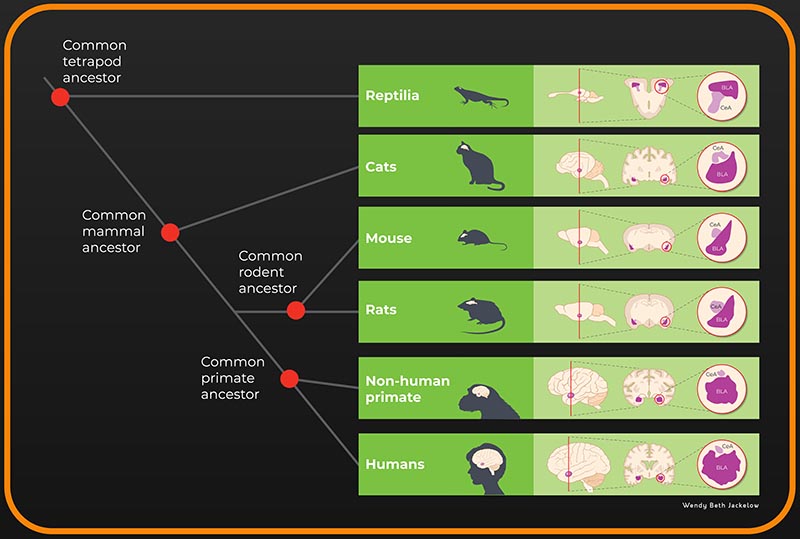The Chemistry of Fear

Fear, anxiety and stress have been experienced by animals for hundreds of millions
of years. Your dogs, cats, pet turtle, and goldfish experience fear, anxiety, and
stress much the same way that you do, although not necessarily as a conscious process.
In other words, these animals experience fear, anxiety, and stress but are not aware
of it to the degree of humans and some other mammals.This is because our brains are
simultaneously similar and very different from that of fish, birds, and even other
mammals.
Fear and anxiety are processed by a number of very ancient brain areas including the amygdala, habenula, and septum. Your pet goldfish has these same exact parts of the brain, and they operate in much the same way. However, in humans and other primates, there are billions of connections between these fear and anxiety areas and our brain cortex (the area of the brain where we associate things like fear and anxiety with other memories, thoughts, and sensations).
Even though humans are not prey anymore, and your pet fish isn't going to be eaten by a bigger predator, we still maintain these fear and anxiety pathways. Just as we see in animals, activating these fear and anxiety pathways inappropriately,when there really isn't anything to worry about, can have negative consequences leading to anxiety disorders, depression, and post-traumatic stress disorder (PTSD).

Above: The amygdala is found in all tetrapods (four legged animals) including humans, indicating
that this brain area is at least several hundred million years old. The brain images
show the location of the amygdala in various tetrapods. It is the basolateral amygdala
(BLA, shown on far right as purple) and central amygdala (CeA, shown on far right
as light purple) that are most important for fear and anxiety, and these structures
are anatomically similar in lizards, cats, mice, rats, non-human primates, and humans
as shown on the far right.
Museum at Texas Tech University
-
Address
3301 4th Street, Lubbock, TX 79415 -
Phone
806.742.2490 -
Email
museum.texastech@ttu.edu
